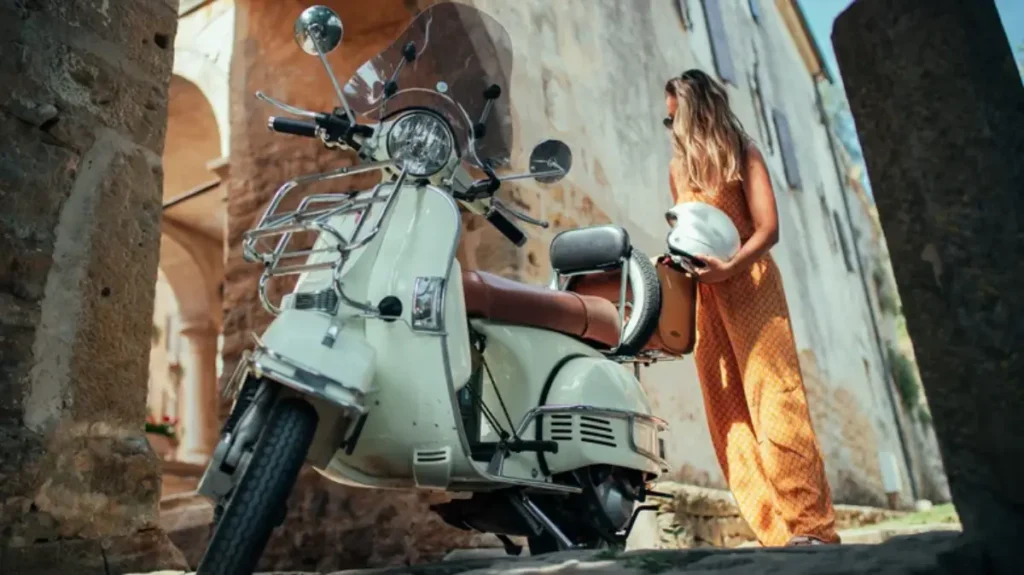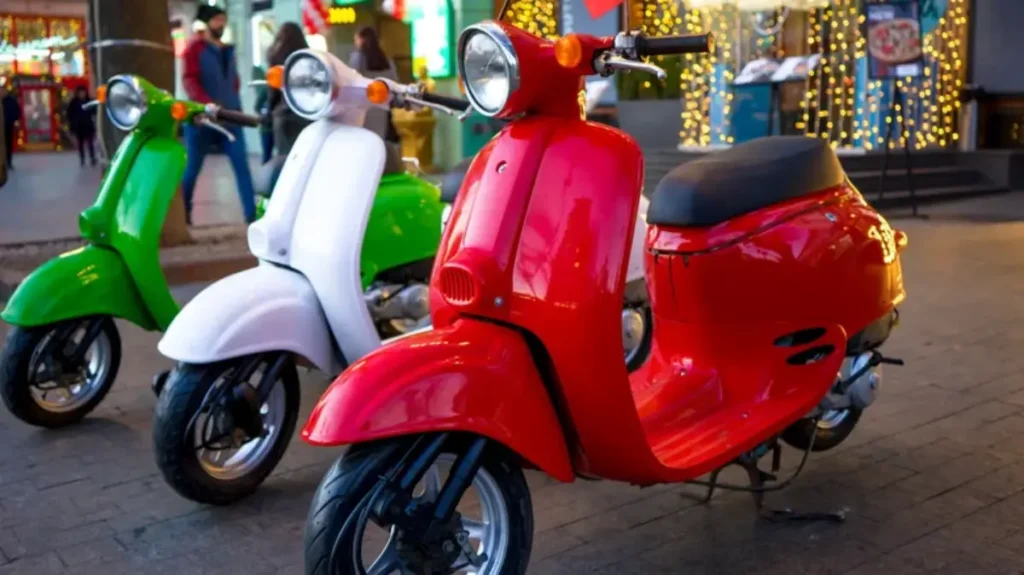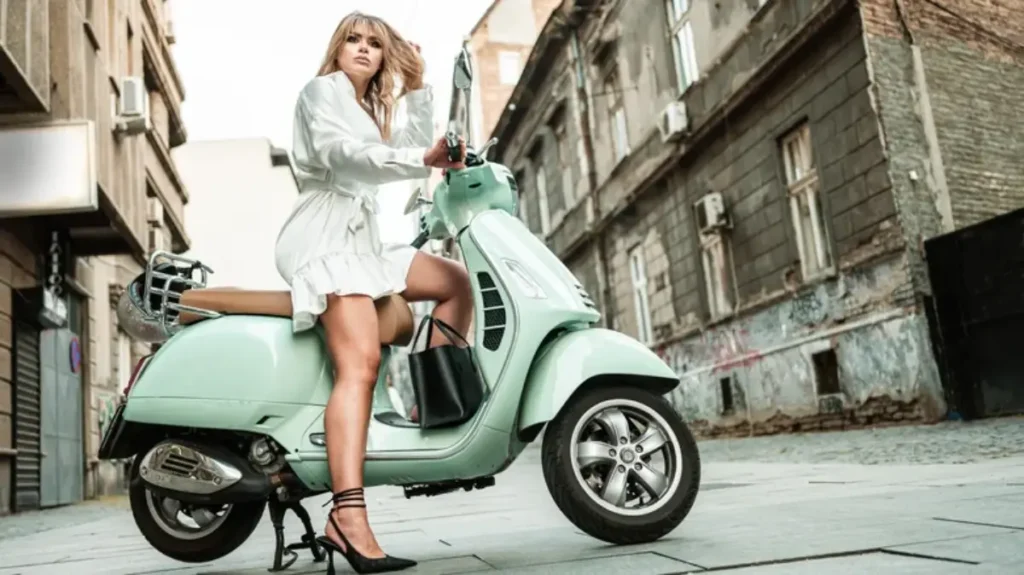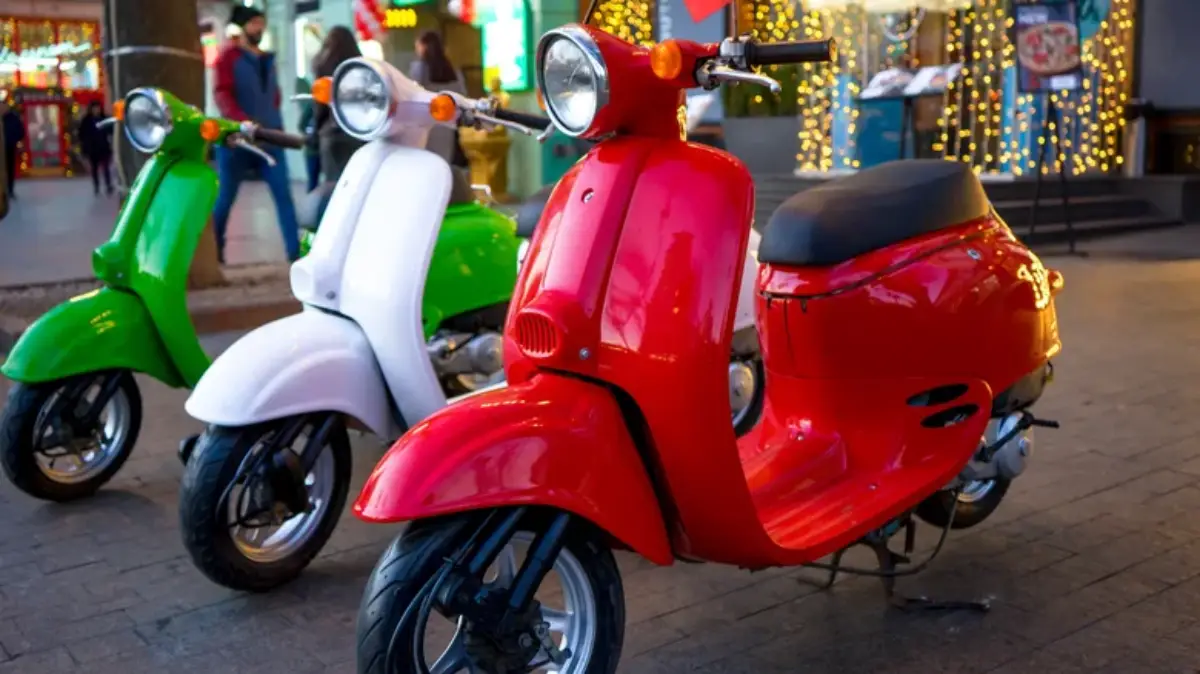
Vespa electric scooter for adults: With its sculpted, classic, and stylish design Vespa electric scooter for adults is one of the most well-known Italian brands globally and most identifiable. Even now, as the company expands into new markets like the electric scooter community, it is undoubtedly one of the world’s most well-liked two-wheeled city dwellers. Still, given their comparable basic architecture, why is the Vespa not classified as a motorcycle?
Most of the time, if you ask around in rider circles, people won’t associate Vespa electric scooter for adults with popular motorcycle brands. Vespas are essentially scooters, and although they have two wheels and an engine, that is about the only similarity between them. As we highlight the reasons why a Vespa isn’t a motorbike in the conventional sense, we will be conclusively answering this question.
The Anatomy of a Vespa and What Sets it Apart from Traditional Motorcycles

When the first Vespa model made its debut in 1946, it had a cool 98-cc engine and a sturdy monocoque steel frame that resembled a snail shell and appeared both elegant and useful. The first-generation Vespas were named after the Italian term for “wasp” because of the characteristic hum of their motor, and they were intended to be used in busy cities.
While You Care for Your Car, Care for Your Child’s Future Too 💖
A fun and educational book every parent should gift their kid.
 Get Kiddy Store Fortune Now
Get Kiddy Store Fortune Now
The body style is the primary distinction between a Vespa and a motorcycle. Scooters and Vespa electric scooter for adults have a step-through design. As if sitting on a chair, the rider can now put their feet on the bottom platform and arrange their legs in front of their bodies. On the other hand, riders will have to straddle the motorbike.
As is customary for scooters, the engines of a Vespa are situated under the seats, close to the back wheel. The engine of a motorcycle is usually situated more forward or in the center.
Owing to the engine location, a Vespa typically has a much lower center of gravity than a motorcycle, giving the rider more balance at rest and making tight, zigzagging turns at a slower speed easier.
Vespa’s unique niche in the market

Regarding Vespa’s position in the market, it is unquestionably at the top of the scooter hierarchy and is frequently regarded as one of the most recognizable brands. Due to Piaggio’s deliberate positioning of the Vespa throughout its history as both a scooter and a fashion statement, it is currently one of the most well-known Italian brand names worldwide.
Unquestionably, Vespa has established a reputation that prioritizes a chic urban commute over giving way to the nostalgia of vintage motorcycles. Though they share basic design elements like two wheels and handlebars, Vespas and motorcycles differ significantly in terms of their overall utility, appearance, technical capabilities, and, most importantly, performance. Being a motorbike, a Vespa is proud to be unusual since it has become a way of life.

